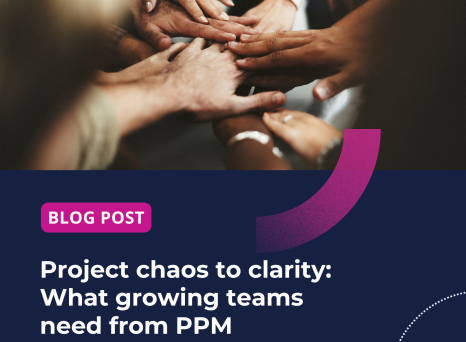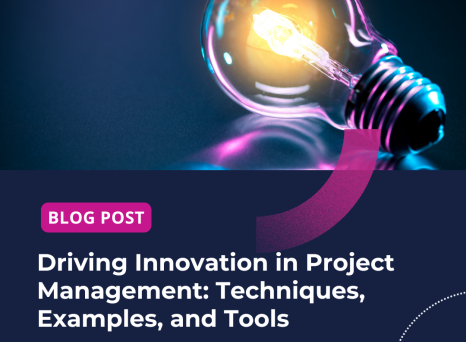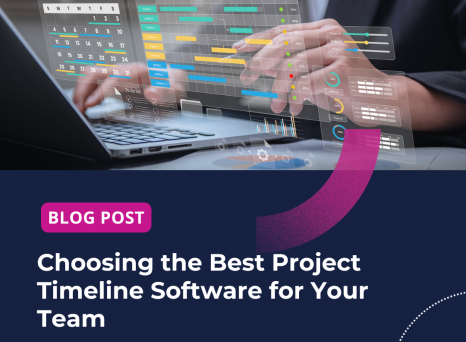Have you noticed project deadlines getting tighter while stakeholder expectations keep rising? You’re not alone. Only 35% of projects are completed successfully and over half of project cost overruns are caused by inadequate data visibility and misaligned decisions across teams.
By the time these overruns appear in reports, contracts and payments to suppliers have already been made, making it too late for easy fixes.
This means that project leaders can no longer afford to rely on outdated spreadsheets or wait for weekly status meetings to uncover bottlenecks. Real-time project tracking has become essential, offering instant visibility into progress, tasks, milestones, and risks.
Why tracking and projection mapping matters: key benefits
Traditional tracking methods often leaves teams playing catch-up. Reports get outdated, team members work with mismatched priorities, and minor issues snowball into major setbacks.
Real-time project tracking moves the needle. By continuously updating project data, every metric, deadline, and milestone reflects the current state of play, not last week’s estimate. This means teams can respond faster, course-correct earlier, and base decisions on real, dynamic insights, not gut feeling or old news.
And that’s not all. When teams start tracking their projects and roadmaps in real-time, they gain more than just up-to-date dashboards but also:
- Faster decision-making. Live data surfaces issues early, so teams can course-correct before delays or cost overruns hit.
- Stronger collaboration and communication. With everyone working off the same information, collaboration becomes more effective, reducing misalignment and fostering a more cohesive working environment.
- Increased accountability. Transparent task ownership keeps progress visible and helps identify blockers and dependencies before they stall momentum, leading to higher performance standards and timely task completion.
- Earlier risk detection. Real-time updates expose emerging risks so managers can respond proactively, not reactively.
- Smarter resource allocation. Continuous monitoring allows teams to adjust assignments as needed, preventing overallocation or underutilization and contributing to cost savings.
In addition to boosting project health, these outcomes foster a much-needed culture of transparency and continuous improvement.
3 techniques for real-time project tracking and visibility
Now that we’ve clarified the benefits, let’s see how your PMO can achieve them through dashboards, KPIs, and cross-team collaboration.
1. Use visual dashboards
Implementing visual project dashboards provides a clear overview of project status, highlighting key metrics such as task completion, deadlines, and resource usage, facilitating quick assessments and decision-making. A project dashboard should offer real-time visual insights into your project's health and performance, enabling you to make informed, data-driven decisions.
Activity tracking dashboards: for a general overview of all project-related activities
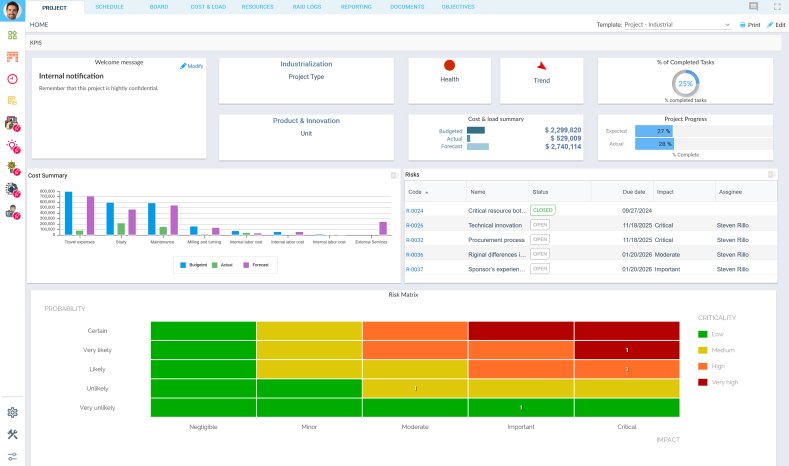
Risk status dashboards: for detailed breakdown of risks and issues, including their impact and severity
Project dashboards should come with automated updates to ensure that project information is consistently current, reducing manual errors and the time spent on administrative tasks.
This is just how Washington State Employees Credit Union (WSECU), a not-for-profit financial cooperative, has used a PPM solution to make faster, better decisions thanks to real-time insight into project status. "Before, leaders had to dig through reports to understand what was happening," says Lori Kaid, VP of Enterprise Agile Project Services. "Now, we have a clear view of everything. We can act fast and make informed decisions."
For more ideas and inspiration on how to leverage the power of visualized project data, don’t miss our free top 10 plug-and-play dashboards guide.
2. Set clear milestones and KPIs
Defining specific milestones and key performance indicators enables precise progress tracking and facilitates the assessment of whether the project is on schedule and on budget. Cost KPIs hold particular importance for many project leaders across industries. Common project financial metrics include:
- Actual cost measuring what has actually been spent so far
- Earned value, which assesses the budgeted cost of completed work to date
- Cost variance—i.e. the difference between earned value and actual cost to show whether the project is under or over budget
- Variance at completion, which quantifies the expected budget surplus or shortfall at project closure
PPM solutions empower project managers to plan, track progress in real time, and analyze the financial performance of projects, enabling PMOs to manage budgets at both a global and detailed level and covering categories such as labor, expenses, and materials.
We mentioned the importance of visual reporting just a little earlier—these financial milestones and KPIs can also be monitored through dashboards.
Milestone tracking reports with Gantt charts: a superb and visual way to gauge your project’s health.
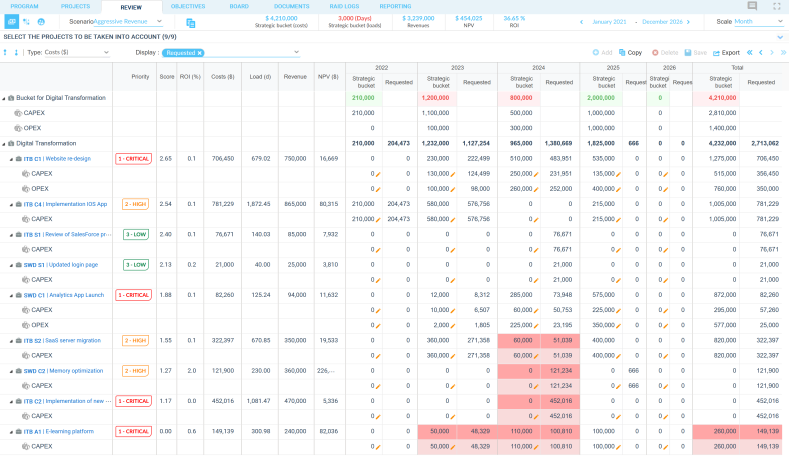
Financial dashboards: for mature PMOs wanting to measure metrics like net present value (NPV), internal rate of return (IRR) and expected sales
3. Promote team collaboration
We mentioned that project tracking and visibility strengthens workplace collaboration and team effectiveness. In turn, seamless communication improves accountability and drives more effective project work.
In a nutshell, to improve your team and collaboration (and ultimately level up your tracking and performance), it’s crucial to focus on process, culture, and technology. You need the right communication protocols, a collaborative mindset, and implementation of integrated tools for communication, file sharing, and task management.
This holistic approach ensures that all team members are on the same page and working efficiently, creatively, and effectively to achieve shared goals.
Elissor is a global leader in the design and manufacture of corrective lenses. With teams spread across four continents, promoting communication, knowledge sharing, and coordination was a big challenge.
By implementing a customizable, collaborative project and portfolio management solution, the organization succeeded in tracking, monitoring, and managing every aspect of its complex, global project portfolio consequently enabling geographically-dispersed, cross-functional stakeholders, to synchronize tasks, share documents, and align resources in real time.
Another example is Novo Nordisk—a leading Danish multinational pharmaceutical company—who used collaborative PPM to provide real-time insights across 1,350 users managing over 150 projects, significantly improving the company’s performance and project visibility.
How a tool like Planisware can help
Leading PPM and SPM solutions like Planisware are designed to help organizations implement real-time project roadmap tracking by centralizing data, offering comprehensive dashboards, enabling better resource management, and providing real-time financial and risk insights.
Additionally, Planisware’s ability to integrate with other tools and support both traditional and agile methodologies ensures that projects can be monitored and adjusted proactively, increasing the likelihood of timely, on-budget project completion.
Ready to see what Planisware can do for your PMO? Schedule your one-to-one live demo today.
